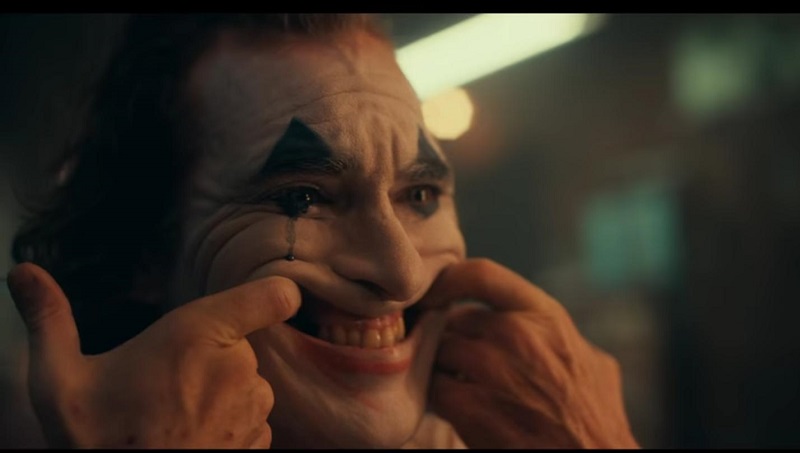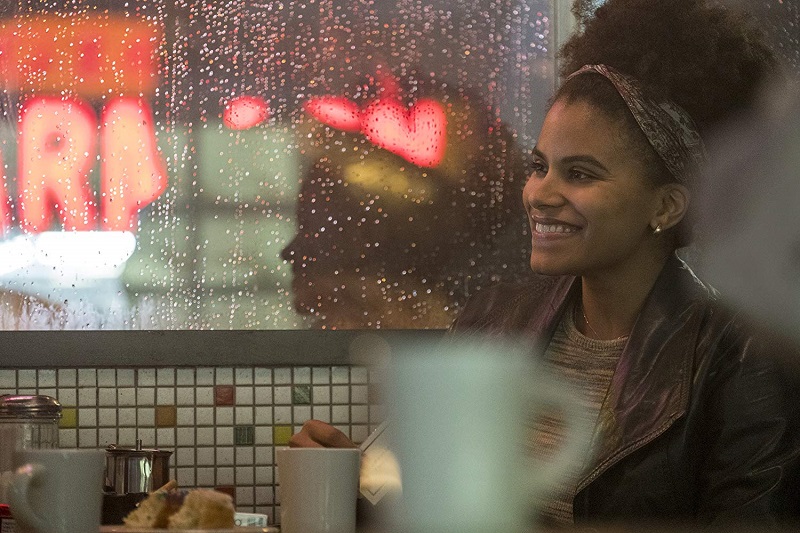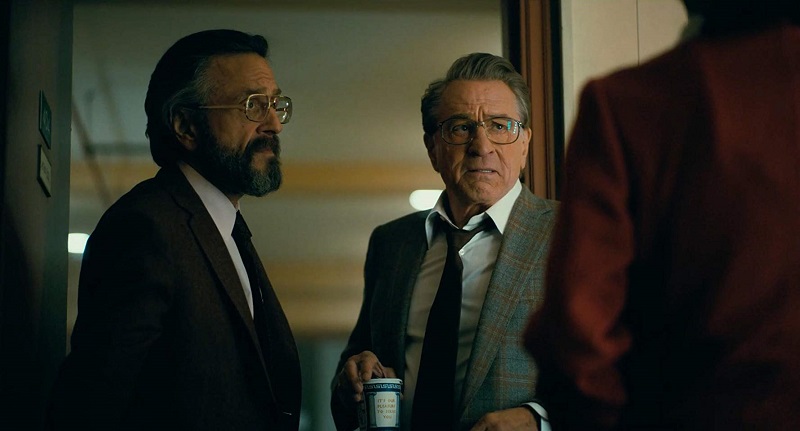Todd Phillips’ Joker is the most unique of cinematic entities. It is a searing and emotionally charged character study of Arthur Fleck. The world better knows him by the moniker he commands in the Joaquin Phoenix starring triumph. Hint: It’s the movie’s title.

Not only is Joker the most extraordinary of character studies, but it also serves as a thespian masterclass. What Phoenix achieves is a full court tour de force. As everyone knows, that iconic popular culture villain earned Heath Ledger a posthumous Academy Award. There is no question that the Walk the Line actor will earn his fourth Oscar nomination (after The Master, Walk the Line and Gladiator. He should have won for the Johnny Cash biopic, after all … was Reese Witherspoon performing in a vacuum? Of course not, her scene partner was robbed.) Now, whether Phoenix will walk the Dolby Theatre stage as Oscar winner, that will certainly be the topic for one of The Movie Mensch’s upcoming Oscar Watch columns.
Many have reported that comedy is much more challenging to pull off than drama. If that is the case for those in front of the camera, it absolutely is true for those behind the camera as well. Therefore, it should be of no surprise that actors such as Robin Williams were able to switch gears from making us laugh to making us cry (he even won an Oscar for Good Will Hunting for his dramatic work). Joker director Phillips made a name for himself with major LOL films such as Old School and of course The Hangover trilogy. What he achieves in his latest is nothing short of a movie miracle.
The sensory tone of this masterpiece is pitch perfect. Sure, it’s dark—that goes without saying and is hardly a surprise. But Phillips’ feel for the flick goes well beyond that. The production design is pure Gotham, which has always served as a fictional municipal metaphor for New York City. Joker takes place in 1981 (at one point, Fleck walks past a theater showing Brian DePalma’s classic Blow Out) and as someone who frequented that city repeatedly during those days (albeit as a kid under my parents’ watchful eye), Gotham 1981 sure looks and feels like Manhattan during the same time period. It was gritty.
Heck, there’s even a garbage strike in Joker that had to be inspired by the real garbage strike that put The Big Apple under a whole ton of trash. There’s also the graffiti. It’s everywhere … on the subway, at bus stops, random building walls and even billboards. Riding the subway in NYC in 1981 was a perilous endeavor and that is exactly the sense gleaned from Joker and the many sequences that take place on the public transport arena. Production designer Mark Friedberg and cinematographer Lawrence Sher will likely hear their names called when Academy Award nominations are announced in January.
The script by Phillips and Scott Silver (The Fighter) is as intricate as it is rich. It possesses layers, societal commentary—and does so, all while keeping an eye on the larger universe where the Joker exists. Make no mistake, this is a stand-alone movie. There will be no tie-ins with The Dark Knight, or more specifically, the Matt Reeves’ directed The Batman movie coming up with Robert Pattinson in the title role. There are Wayne mentions and a character in that family plays an enormous part in the film, but it is never—absolutely never—about the cross section that is The Joker and the Wayne family. Phoenix achieving greatness is not done in a vacuum. He is given pristine prose to work with, but also a living and breathing landscape that is ripe for the rise of an anti-hero that could have seismic effects on Gotham and the well-being of its populous. The screenwriters have done something so original that the film has absolutely earned all the salutations it received—including winning The Golden Lion at the Venice Film Festival (that fest’s top honor).

As Joker begins, we meet Fleck working a vocation he adores. He is a clown and sees his life mission as bringing smiles to those who desperately need them. After all, it’s “crazy out there”—as Fleck says, and as history has shown us, comedy is the antidote for difficult times (just look at the genre’s explosive success during The Great Depression in the 1930s). Within moments, he is brutally attacked by a group of teens. Then, he goes home to his dank apartment. What it lacks in ambiance and niceties, it makes up for in love. Fleck lives with his mother Penny Fleck (Frances Conroy, Six Feet Under). The two are close and Arthur treasures taking care of her.
Yet his dream is not coming to fruition. Arthur wants to be a stand-up comic. He idolizes Robert De Niro’s Murray Franklin, who is pretty much Johnny Carson in Phillips’ world. One can sense that Arthur’s command of reality is painstakingly slipping. Our protagonist starts to become our antagonist, slowly but surely slipping down that rabbit hole of iconic villainy. Franklin, and his show, will play a major role in catapulting Joker into the public consciousness as he morphs from caring soul who wants nothing more than to make people smile to killer who wields violence as effortlessly as comics utter punchlines.
Silver and Phillips also fascinatingly explore mental illness. Specifically, the screenwriters piercingly showcase how society handles that elephant in the room. When it comes to mental illness and its intertwining relationship with violence, the topic is sadly grappled with like a couple of kids with a hot potato. It’s both hands-off in terms of dealing with it and sadly too quick to blame it when the situation warrants it.
There is an impeccable balance of popular music versus score throughout. Hildur Guðnadóttir has crafted a score that is utterly haunting and masterfully alters as Arthur’s journey becomes more vicious and violent. Phillips could not have chosen a better musical maestro. Her score for Chernobyl was exquisite and most likely served as an audition for what Phillips sought to sonically do with Joker. There are two popular songs that reverberate throughout, Put on a Happy Face and That’s Life (Frank Sinatra’s version). Rarely have lyrics to a song, coupled with its musical arrangement, been more apt for the entirety of a film than That’s Life in Joker. No spoilers here, but it is bloody brilliant … simply spectacular. Yes, Send in the Clowns is utilized. When Phillips does employ the Sinatra version of the classic track, the song could not be a better tonic for what ails us emotionally, and yes even physically.

Zack Galifianakis, Ed Helms and Bradley Cooper turned in performances that were what the doctor ordered for Phillips’ The Hangover movies. My point is, the comedic director has not necessarily been known as an “actor’s director” over his career. Phillips’ work on his latest should change that immensely.
Yes, this is Phoenix’s show, but others add extraordinary elements to the fullness that is Joker. De Niro, Zazie Beetz (who plays a neighbor/love interest Sophie Dumond) and Conroy all add so much to the landscape of this DC Comics endeavor. The legend, De Niro, plays a part that could have easily felt like a repeat/update of his work in The King of Comedy. Instead, he fully embraces his part in serving as a conduit for Arthur’s transformation and societal commentary for the madness that is rapidly escalating outside on Gotham’s streets. Beetz’s character delightfully captures the essence of an individual who would find Arthur attractive and gives the audience some unspoken insight into what others in this world see in Arthur who aren’t taken aback by him (most everyone!) or relying on him (his mother). Meanwhile, Dumond delivers a turn that reverberates throughout the Joker experience. After all, this is the character that raised our anti-hero/villain. Her frailty, both mentally and physically, is never seen as a hindrance to Arthur’s personal trajectory. That all arrives via the actress’ titanic talent. She threads the minutest needle that her onscreen persona must balance. In the hands of anyone else, that aspect might have drastically altered the tone of the entire film.
Phoenix is magnetic. He utterly explodes off the screen in a performance that will have you simultaneously wanting to give the guy a hug and run as quickly as possible in the opposite direction of wherever he happens to be at the moment. Rarely have I seen an actor so emphatically embrace the core of his character and his evolution into violence-inspired madness as what Phoenix achieves as Arthur and his titular alter ego. There’s digging deep, and there is what The Sisters Brothers star achieves with his latest. He has always been sensational, but everything Phoenix has done to this point is be pale compared to the nuanced, layered and electric turn he delivers in Phillips’ stunner.
One of the iconic traits of Joker is his laugh. After all, he is “The Joker!” Jack Nicholson had his, Heath Ledger found his own and even Jared Leto exhibited one. The vocal expression of laughter from Phoenix in Joker feels equally as organic as spontaneous. It is emblematic of the actor’s entire performance. There is a meticulous attention to detail. Phoenix keenly knew that every single note, inflection and even physical manifestation of this character that has been around for decades, would be compared to those who came prior. His turn had to be exquisite in every sense of the word.

There has been a lot of talk about the role of violence in the film and whether what is seen onscreen will manifest itself in reality across the country. This comes at a time when there is a mass shooting occurring in America at almost a once a day pace. Those that have been covering this angle of the film’s release, of course, haven’t seen the actual artistic work that found them pontificating about its potential for spurring violence. It is absolutely ridiculous to think that first, this is anything but a slice of entertainment and second, if it does have any connection to our society, it is merely holding up a mirror. It’s hard to look at oneself when what stares back at you is not pretty. We are living in an ugly time and Joker did not cause it. In fact, what Phillips has achieved with his masterwork is spotlight an issue in our society that needs to be addressed in the biggest of ways. Unchecked mental illness—coupled with a society that valiantly celebrates the violent end of the spectrum—with easy access to violent implements (such as guns)—and it is a Molotov cocktail set to explode.
One would hope that if anything, the brutality of Joker should spur a much-needed and overdue conversation about mental illness, guns and a society that seems unwilling to deal with either.
Grade: A+

